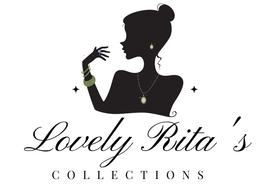About Diamonds
Diamond Earrings, Diamond Rings, Men's Diamond Rings
Wearing a diamond ring is a great way to look fantastic. A nice pair of diamond stud earrings complete any outfit by making you sparkle. Whether you FFFD are going out for a night on the town and you want that sexy look or you have a business trip, diamond jewelry works with everything! Diamonds are no longer only for engagement rings. We carry diamond rings, diamond earrings, diamond necklaces, diamond watches, and much more! Choose that perfect piece and sparkle!
Don't forget about the men, guys love to shine also. Jewelryshopping.com has a huge selection of men's diamond rings, diamond watches, and diamond stud earrings.
Diamond Necklace, Diamond Tennis Bracelets, Diamond Watches
Need that perfect gift? Diamonds are the eternal symbol of love, and diamond jewelry has been the ultimate gift throughout history. You can't go wrong with any of our diamond necklace, diamond tennis bracelets, or diamond watches.
Don't forget, all diamond jewelry is already discounted up to 50% off the manufacturer FFFDs suggested retail price. Jewelryshopping.com can afford to sell jewelry at such low prices because we do not have a large storefront overhead like our prehistoric competitors! Jewelryshopping.com is a 100% online retailer of fine, discounted jewelry. We guarantee that our discount diamonds are legitimate because we are proud members of the Jewelers Vigilance Committee.
The Education of a Diamond
The 4 Cut, Color, Clarity, Carat Learn about choosing the perfect diamond by following these guidelines.
Finding the perfect diamond can be overwhelming especially if you are a first time shopper. But once you know the basics, choosing a diamond can be exciting and rather simple. Diamonds are classified by the 4 Cuts, Jewelryshopping.com has supplied you with accurate information, to make choosing a diamond for you or your loved one an easy process.
Cut
Probably the most important of the Cut; it determines the shape, brilliance, and fire of diamonds.
The cut of a diamond is very important to any diamond for both aesthetic reasons as well as its ability to increase market value. The cut refers to the technique of changing the stone from in the rough to a brilliant diamond.
Brilliance refers to how the diamond sparkles and sets it apart from all other gemstones. It is caused by white light reflecting off the diamonds surface and the mirrored depths of the pavilion.
Fire or dispersion is the flashes of reflected color within the stone.
A proper cut will enhance a stones brilliance, and increase the market value of the diamond. In order to achieve this, the diamond must be cut proportionately.
Diamonds, of course, come in many different shapes, and the shape of a diamond refers to how a diamond was cut. What you may not know is that the different shapes, although all are lovely, have a different effect on the degree of brilliance and fire. Depending on what factor is important to you, choose your diamond accordingly.
Shapes:

This royal cut is deemed emerald because the shape is most associated with the emerald gemstone. It is the most expensive cut, because it generally has a higher clarity, but with a catch--the emerald cut diamond can appear dull, because it has fewer facets, which ultimately means less brilliance.

A romantic cut, the Heart cut is very difficult to make perfectly but very attractive. The heart cut epitomizes the greatest expression of love.

This royal cut carries the name of a French noblewoman, it can not be mistaken for its pointed oval shape separates it from all others, its fragile ends also make it the most expensive of all the cuts.

An alternative to the round diamond, it can give the illusion of a larger diamond compared to a round cut diamond of the same weight.

The pear shape is cut to maximize brilliance, and like the marquise it is fragile because of its one pointed end, which makes it less expensive.

The radiant cut is square in shape with the rounded edges like the emerald cut, to maximize brilliance and fire.

Unlike the emerald cut, the Princess cut has high brilliance and will not dull quickly. The princess cut is extremely popular right now, after it was worn by Sarah Jessica Parker in Sex and the City.
A timeless classic, the round cut is the most popular of all cuts. It has high brilliance, which makes it the most common for solitaire pieces.
Other fancy cuts include the trillion, the asscher, and the cushion.
Color
In terms of value, the opposite ends of the color spectrum are higher in value. A colorless or icy white diamond is more valuable than a diamond with a slight yellow tint. On the other end of the spectrum, diamonds with bold colors of yellow, pink, blue are more expensive.
Color is graded on the GIA Color Chart shown below:
|
Color Grade |
Description |
Appearance |
|
D |
Colorless |
Diamond appears completely colorless. There is no change in appearance when mounted. |
|
E |
||
|
F |
||
|
G |
Slight color |
A slight color tint is visible during grading, but when mounted the stone looks colorless. |
|
H |
||
|
I |
||
|
J |
||
|
K |
Faint yellow |
Color tint is visible during color grading, and when mounted the stone shows a tint of color. |
|
L |
||
|
M |
||
|
N-Z |
Light yellow |
Obvious yellow or grayish color |
|
Z+ |
Fancy |
Color is bold. |
Clarity
The clarity measures a diamonds purity or imperfections. A diamond may have inclusions or blemishes, which are internal and external imperfections. The fewer the flaws the higher the market value of a diamond. Many times these flaws are not visible; however with close inspection they become apparent and could ultimately decrease the value of the diamond.
Clarity is graded in the GIA Clarity Chart shown below:
|
Clarity mark |
Description |
Appearance |
|
F |
Flawless |
No imperfections internally or externally. |
|
IF |
Internally Flawless |
No inclusions are apparent. |
|
VVS1 |
Very Very Slight Inclusion #1 |
Under 10x magnification, small inclusions are unapparent. |
|
VVS2 |
Very Very Slight Inclusion #2 |
Under 10x magnification, small inclusions are almost unapparent. |
|
VS1 |
Very Slight Inclusion #1 |
Minute inclusions are difficult to see under 10 x magnification |
|
VS2 |
Very Slight Inclusion #2 |
Minute inclusions are somewhat unapparent under 10x magnification |
|
SI1 |
Slight Inclusion #1 |
Inclusions are easily identified under 10x magnification |
|
SI2 |
Slight Inclusion #2 |
Inclusions and/or blemishes are apparent at 10x |
|
I1 |
Included #1 |
Inclusions and/or blemishes are virtually apparent without magnification |
|
I2 |
Included #2 |
Inclusions and/or blemishes are apparent without magnification |
|
I3 |
Included #3 |
Inclusions and blemishes are extremely apparent |
Carat
The weight of a diamond is measured in Carats, which should not be confused with Karat, the weight measurement for gold. On carat is equal to 0.20 grams. The carat alone does not determine a diamonds worth, although, generally the bigger the diamond the more expensive it is.
The History of Diamonds
Thousands of years ago at the Earths core, carbon crystallized under extreme heat forming what we call a 'diamond.' In some instances and under extremely rare accidents of nature other substances mixed with the carbon causing the composition to change and ultimately created a colored diamond. After the formation, violent volcanic eruptions pushed a substance called kimberlite carrying the crystallized carbon to the surface, where it was then discovered by humans.
The word 'diamond' actually comes from the Greek word for "unconquerable," and throughout history, the diamond was held in high regard by ancient kings from China, India, Egypt, and across Europe for its incredible strength, as it can not be scratched by any other known material.
Before the 18th Century almost all diamonds were found in India, who naturally dominated the trade. In the beginning only two trade routes to Europe have been recorded. One starting in India, leading to Constantinople, and ending in Italian cities. The other starting in the Saudi Peninsula, and traveling by water from Egypt to Europe.
During this time, diamonds were also revered by Arab princes, who bought the largest diamonds from the traders traveling to Europe and Chinese noble men. In China, the diamond was honored as a symbol of wealth and was used as an engraving tool by the wealthiest nobility. The diamond was an icon, desired for its unbeatable strength rather than for its beauty.
A change occurred during the second half of the 15th century when the French Dukes of Burgundy wore diamond jewelry as a sign of wealth and luxury. At the end of the 15th century, Austrian Archduke Maximilian gave a diamond ring to his fiancé constituting the tradition of giving a diamond as a symbol of love and eternal commitment. The ring was placed on the fourth finger of the left hand, due to superstition that the finger holds a direct link to the heart, and so holds the tradition of placing the engagement ring on this finger.
As the diamond became increasingly popular, its demand increased as well, depleting the diamond mines in India. It was around the same time, at the beginning of the 18th century, when the Indian mines were drying up that diamonds were discovered in both Brazil and South Africa. The Brazilian mines, however, ran dry within the century, leaving South Africa to discover the world's largest and most famous diamonds in the world, only second to those found in India. Today diamonds are mined in Angola, Australia, Botswana, Brazil, China, Ghana, Namibia, Russia, South Africa, and Zaire. The major cutting centers are in Antwerp, Bombay, New York, and Tel Aviv.
Today, diamonds are not only for the wealthy. With technology, the diversity of diamonds have made the diamond even more popular and everyone can find them affordable. This century will be the most prosperous for the diamond as new cuts are discovered and new designs for jewelry include diamonds.

